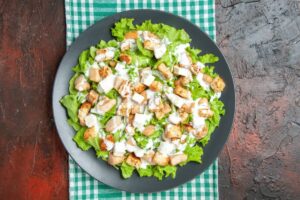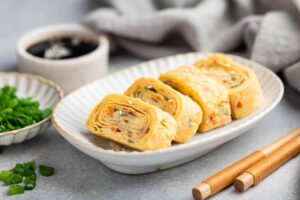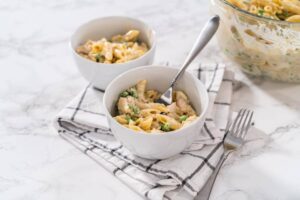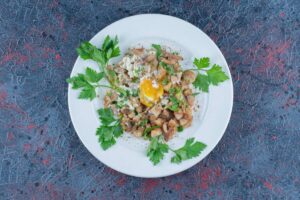The Food & Recipes Blog
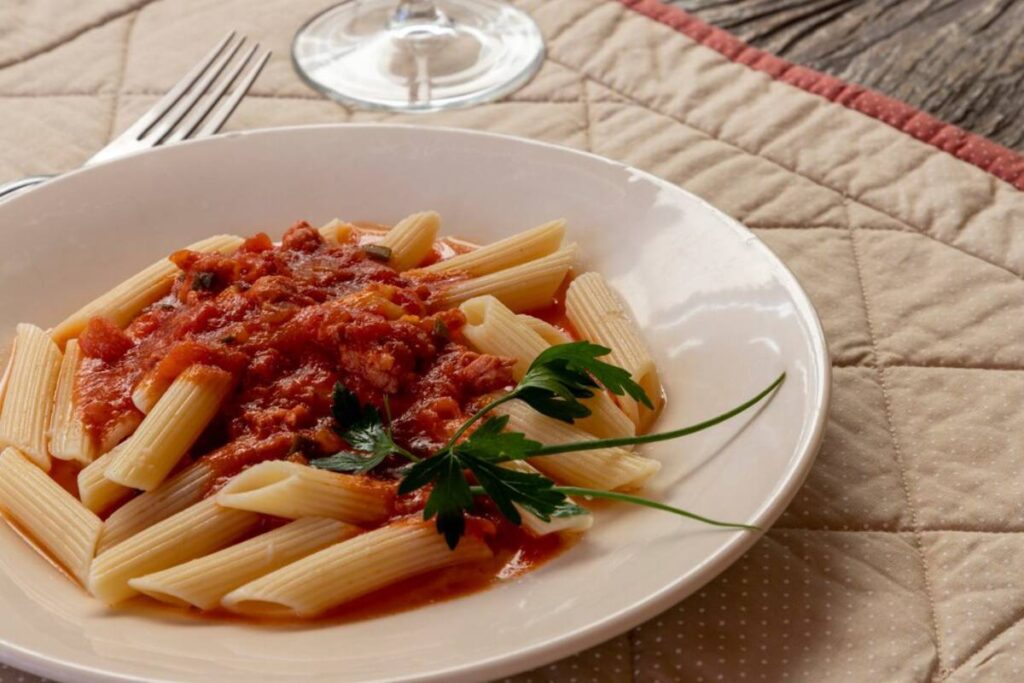
Olive & Tomato Pasta in 15 Minutes
Some dishes owe their appeal not to complexity or novelty, but to their refusal to overextend. This olive and tomato pasta exemplifies such restraint. It doesn’t try to impress with volume or flash. Instead, it delivers clarity—a kind of disciplined satisfaction that comes from letting a few well-chosen ingredients speak unencumbered.
It’s a pasta built not around sauce but around interaction: oil gliding along ridged penne, garlic curling at the edges in the heat, briny olives counterbalancing tomato sweetness. The flavours don’t compete—they orbit one another, quietly.
And the preparation? It’s uncomplicated. Fifteen minutes, two pans, no flour-dusted worktops, no simmered reductions—just pace and order.
The Anatomy of Simplicity
It’s easy to forget how little pasta is needed to be good. We’ve come to associate quality with complication, and yet, properly sequenced garlic, tomatoes, olives, and oil can offer a result that feels not like a shortcut but a decision—a conscious one.
Tomatoes bring acidity and pulp. Olives add sharpness and salt. Garlic offers aromatic weight. Olive oil carries it all across the palate.
Together, they produce a dish that tastes anchored, rooted not in richness but in form.
Ingredients (Serves 2)
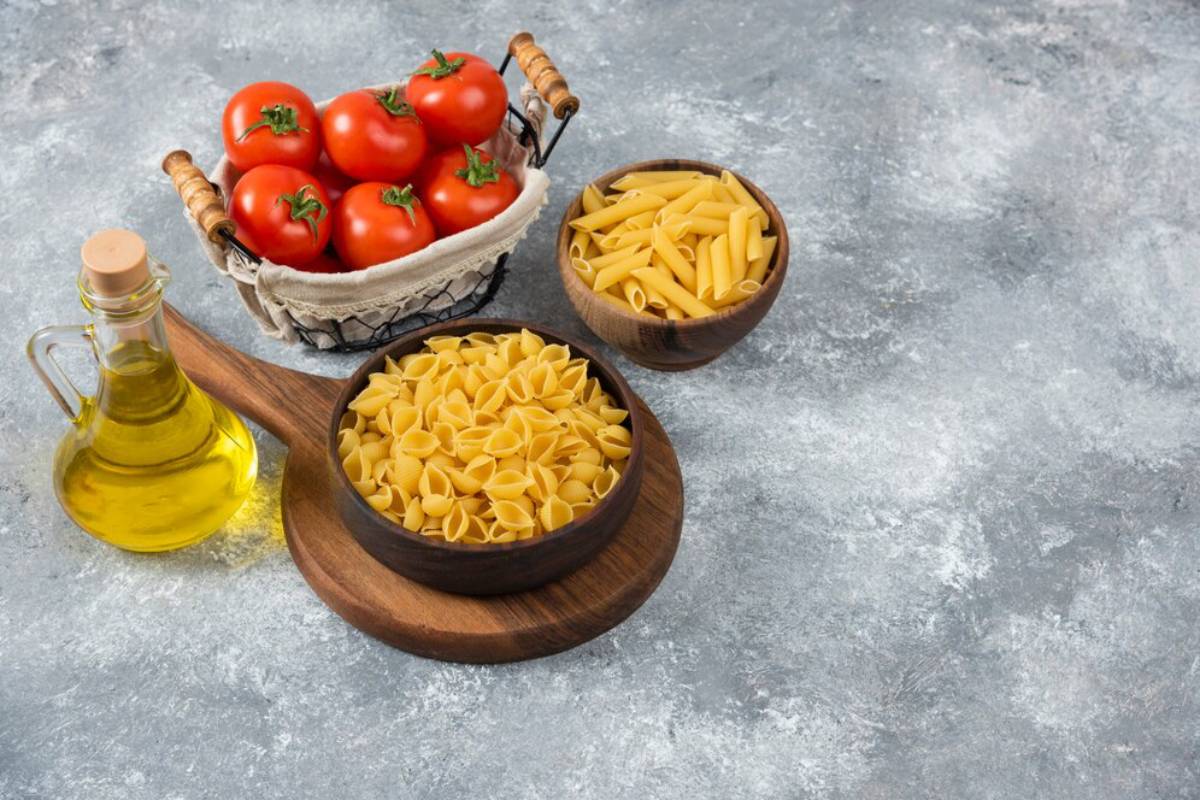
- 180g dried pasta (spaghetti, fusilli, or penne all work)
- 2 tbsp extra virgin olive oil
- 2 garlic cloves, thinly sliced
- 200g cherry tomatoes, halved
- 8–10 pitted olives (Kalamata or green), halved
- ½ tsp dried oregano or thyme
- A pinch of chilli flakes (optional)
- Sea salt and freshly ground black pepper
- Reserved pasta water
- Fresh parsley or basil, for finishing
- Optional: lemon zest, grated pecorino, or a drizzle of good balsamic
Method
1. Boil with intention
Salt your water properly—heavily, not timidly. This is your first seasoning, and then bring it to a rapid boil and cook the pasta until just shy of al dente. Reserve a ladle of pasta water before draining.
2. Layer the base
While the pasta cooks, heat the olive oil in a wide, shallow pan over medium heat; add garlic and stir gently as it begins to soften, not brown. You want release, not aggression. After 30 seconds, introduce the tomatoes and a pinch of salt. Cook until they slump slightly, releasing juice, their edges softening but not collapsing.
3. Introduce contrast
Toss in the olives and dried herbs. If you’re using chilli, add it now. Stir just enough to warm the olives through, allowing them to season the oil without dominating the flavour field.
4. Combine and finish
Drain the pasta and add it directly to the pan. Toss to coat and add a splash of reserved water to emulsify and cook for another minute until the sauce clings lightly but deliberately to the pasta. Taste, adjust and finish with black pepper, chopped herbs, and, if desired, a second stream of olive oil or a wisp of lemon zest.
Taste in Structure
This is not a sauce-forward pasta. It’s assembled rather than dressed; the liquid that clings is barely visible, but you taste it—the oil, the acid, the saline echo of the olives. Everything remains present, but nothing overwhelms and a series of small, coherent gestures instead of a single heavy hand.
The texture should move between softness and slight resistance: pasta that isn’t entirely smooth, tomatoes that aren’t entirely broken, and garlic that hasn’t disappeared.
Avoiding the Obvious Pitfalls
- Overcrowding the base: Too many ingredients dilute the architecture; this isn’t a vegetable medley. Keep it tight, and let the core flavours establish rhythm.
- Letting garlic burn: Colour equals bitterness. If your garlic edges into gold too quickly, remove the pan from the heat briefly before continuing.
- Using poor-quality olives: There’s nowhere to hide in a five-ingredient recipe. Briney, rubbery tinned olives will unravel the balance; choose olives with firmness and clarity.
- Forgetting to taste: The final adjustment—acid, salt, oil—is not indulgence; it’s maintenance. Taste. Always.
Variations Without Losing Identity
- With anchovy: Add one or two fillets to the oil before the garlic. They’ll dissolve and deepen the dish without changing its character.
- With capers and lemon: A teaspoon of capers and a strip of zest will shift the flavour toward something sharper, leaner.
- With breadcrumbs: Toast breadcrumbs in olive oil until golden and scatter just before serving. A change in texture that’s barely an effort.
- With green herbs: Swap parsley for mint or basil, or blend all three. Add at the end to retain their top notes.
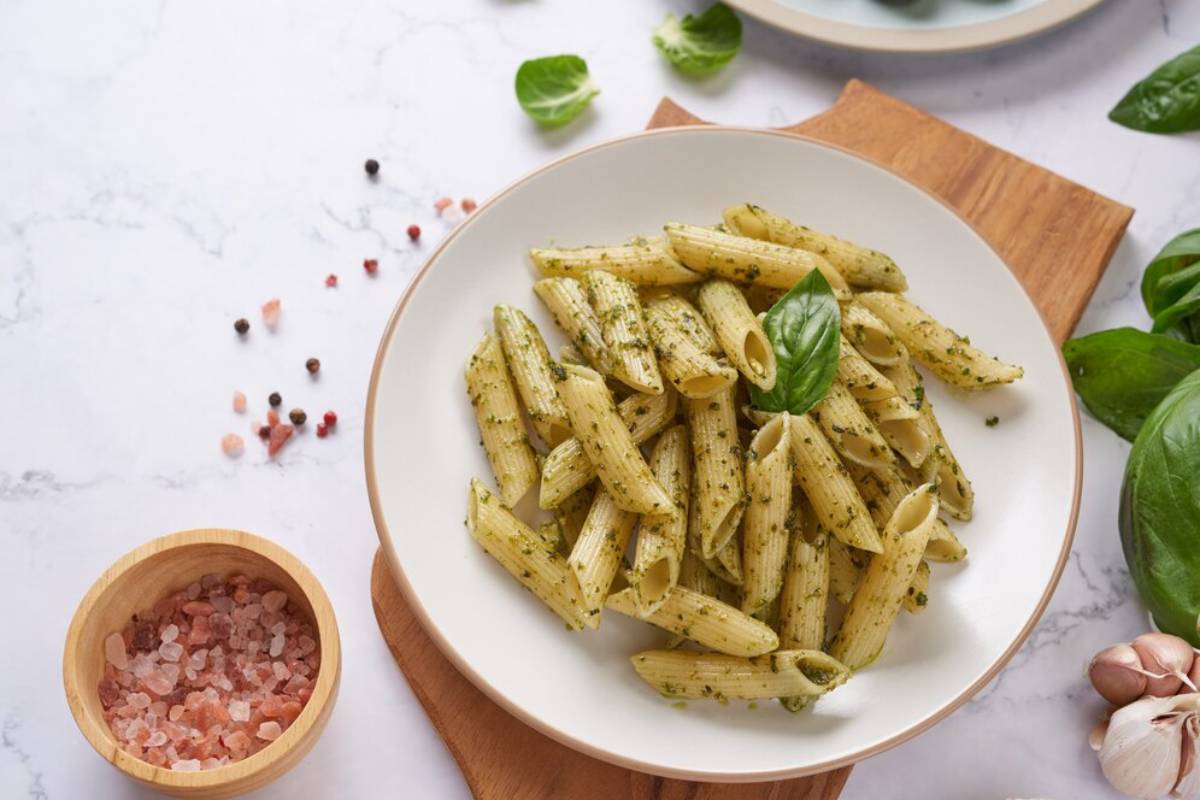
Nutritional Insight (Per Serving – Approximate)
- Calories: ~440
- Protein: ~10g
- Carbohydrates: ~50g
- Fat: ~18g
- Fibre: ~5g
This 15-minute quick pasta occupies a useful middle ground: substantial without density, rich in flavour without cream or cheese, and easily made vegetarian or vegan. It is a meal that satisfies by shape and flavour rather than by weight.
Who Does This Dish Belong To
This isn’t pasta for guests. It’s pasta for you; for the nights when the idea of effort is unappealing, but the idea of passivity is worse, when you want something to taste like it’s been thought about, even if it hasn’t been overthought.
It’s for solitary dinners and two-person suppers, for the days when what you really want is something that doesn’t feel like a compromise. Something honest, assembled quickly but not carelessly.
Closing Thought: Form, Not Flourish
This Mediterranean pasta doesn’t arrive with garnish or spectacle; it doesn’t ask to be admired, what it offers instead is confidence in restraint. Its success lies in proportion—just enough garlic, just enough olive, just enough tomato, the cooking, like the flavour, is immediate but composed.
And when dinner takes fifteen minutes and still makes you feel like you’ve eaten something proper, that’s not just quick. That’s clarity.
Would you like the next post to deconstruct ingredient-driven 15-minute Mediterranean plates, profile a series of refined weeknight pastas, or offer a deep dive into flavour layering in low-cook meals?



